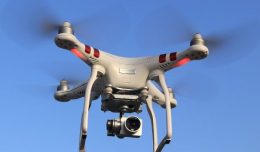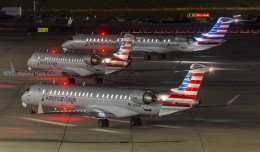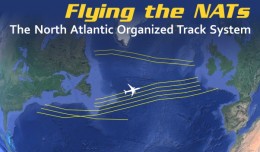This question is one of the greatest causes of frustration for a pilot speaking to non-pilots about what it is that they do. They can already see that if they answer with the latter, the person posing the question imagines them as a trainee sitting in the cockpit crunching numbers, only granted the responsibility of taking control of the autopilot when the captain leaves to use the lavatory. The media seems to further endorse this perception with its approach to coverage of aviation accidents and incidents. Most recently, the recovery of the black boxes from the Air Asia crash and the information it contained perpetuated the myth: “We now know that when this happened, the co-pilot was at the controls.” This was said as if to imply that this piece of information should provide valuable insight as to why a dangerous situation occurred, as if to ask, “Why wasn’t the real pilot flying the plane in a deteriorating situation?”
Today, on behalf of my colleagues, I’d like to make some clarifications about the roles of the pilot and the co-pilot. However, first, we need to talk about the differences between a commercial pilot and an airline pilot.
A commercial pilot is a pilot who holds a commercial pilot’s license. A commercial pilot license allows a pilot to fly for compensation. That is all it means. It’s like the difference between amateur and pro. A private pilot is an amateur, and a commercial pilot is a pro. The primary distinction is whether or not the person gets paid to do what they do. I currently fly commercially for a charter company – you can liken it to an air taxi/limousine service. When discussing my job to friends or family members, it would not be uncommon for me to be asked “Would you ever want to be a commercial pilot?” I would often reply that I am a commercial pilot; perhaps what they meant was to ask whether or not I wanted to fly for the airlines.
In order to become an airline pilot, in addition to having a commercial pilot license, one also needs an airline transport pilot license (or ATP). The flight experience required in order to obtain an ATP starts at 1500 hours of total flight time. In addition, any aircraft weighing more than 12,500 lbs — even the small “puddle jumper” airliners — require a separate aircraft specific license called a type rating. The differences between flying an Airbus and a Boeing are not comparable to driving a Ford versus a Toyota. Even different models by the same manufacturer more often than not require separate type ratings (a Boeing 737 is quite different from a 747). Obtaining a type rating typically takes two weeks of vigorous ground and simulator training that culminates in a final type ride requiring the pilot to demonstrate a working knowledge of the aircraft’s systems and proficiency in flying the aircraft with various malfunctions and in inclement weather conditions. After a pilot has acquired the type rating, it must be kept current. In order for the pilot to keep exercising the privileges of a type rating, he or she must pass a proficiency check every six months. Can you imagine having to take a road test every six months in order to keep your driver’s license?
Now on to pilot vs co-pilot. I’m not sure why or how this perception came to be, but it seems that much of the general public doesn’t think the co-pilot is a real pilot or is somehow grossly inferior to the actual “pilot pilot.” To better describe their roles, let’s get away from pilot and co-pilot, because they’re both pilots, and start with the actual industry nomenclature. We have a captain and a first officer. Both pilots have ATPs and type ratings to fly their assigned aircraft. In fact, when a captain and a first officer are paired together to fly, they typically split the flying 50/50. If the pairing has them working 4 flights together, the captain will act as flying pilot for two flights, and non-flying pilot for two flights. The primary distinction between the roles of the captain and the first officer, is that the captain carries the weight of responsibility and authority. The captain, or pilot-in-command, in addition to being proficient at flying the aircraft, also assumes the role of in-flight manager. This role of authority is often more effectively accomplished when the captain is not piloting the aircraft, especially in an abnormal or emergency situation. With the first officer at the controls, the captain is allowed to widen his or her scope of attention, to be able to gather input from all available resources – from the first officer, the flight attendants, dispatchers and air traffic controllers to determine the course of action that would result in the most positive outcome.
At the airlines, first officers are upgraded to become captains based on date of hire within the company, also known as seniority. This means that a captain at one airline who switches jobs to work for another airline will have to start as a first officer until he or she has the seniority to upgrade to captain again. Because of this system, and a multitude of other scenarios and variables that could be an essay of its own, it is not at all uncommon for a first officer to actually have more experience than the captain that he or she flying with.
Jeff Choi had his first flight lesson about ten years ago. He’s been working as a commercial pilot for almost eight years with experience as a flight instructor, a first officer at a regional airline, and now a Captain at a charter company.







